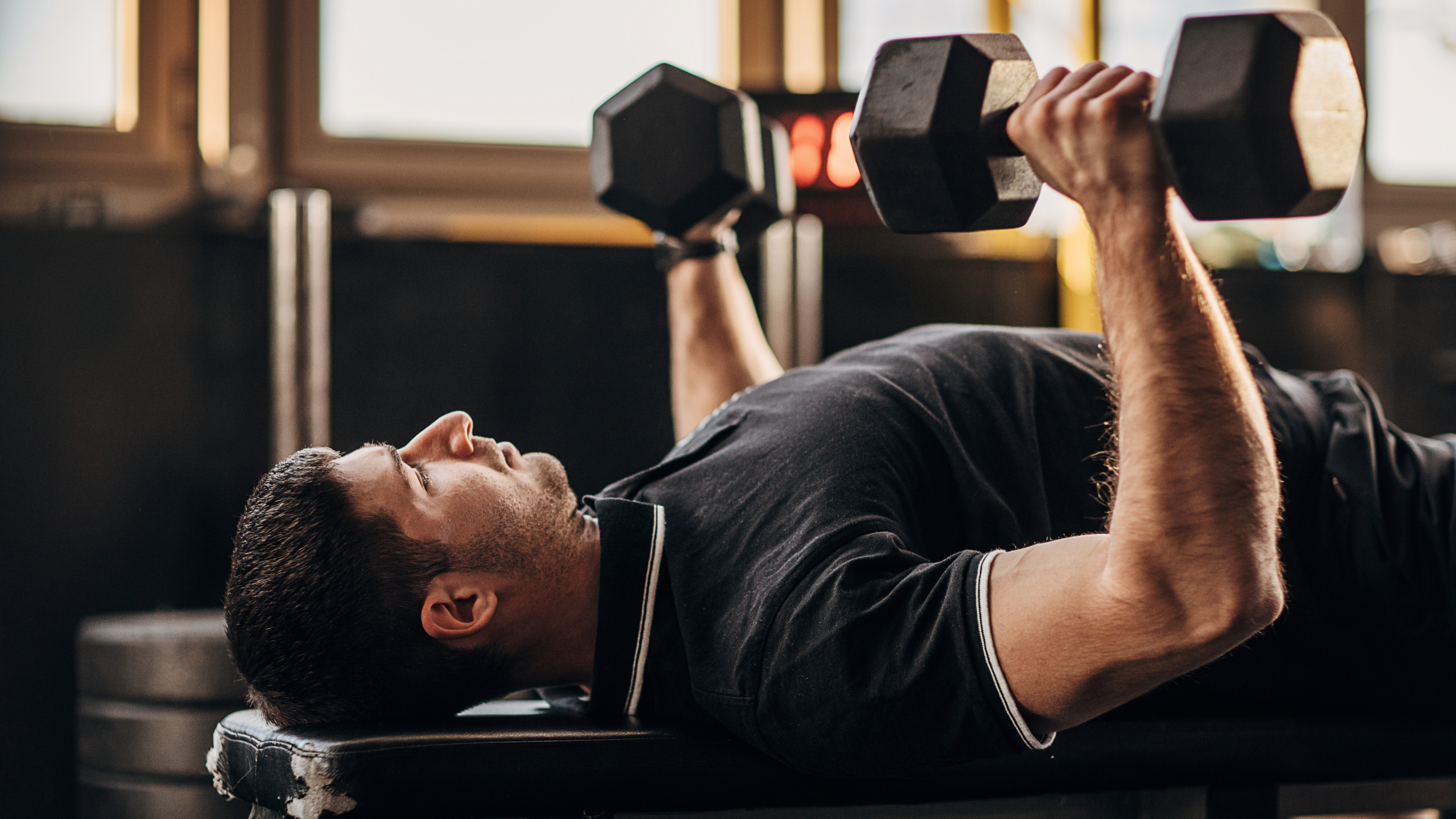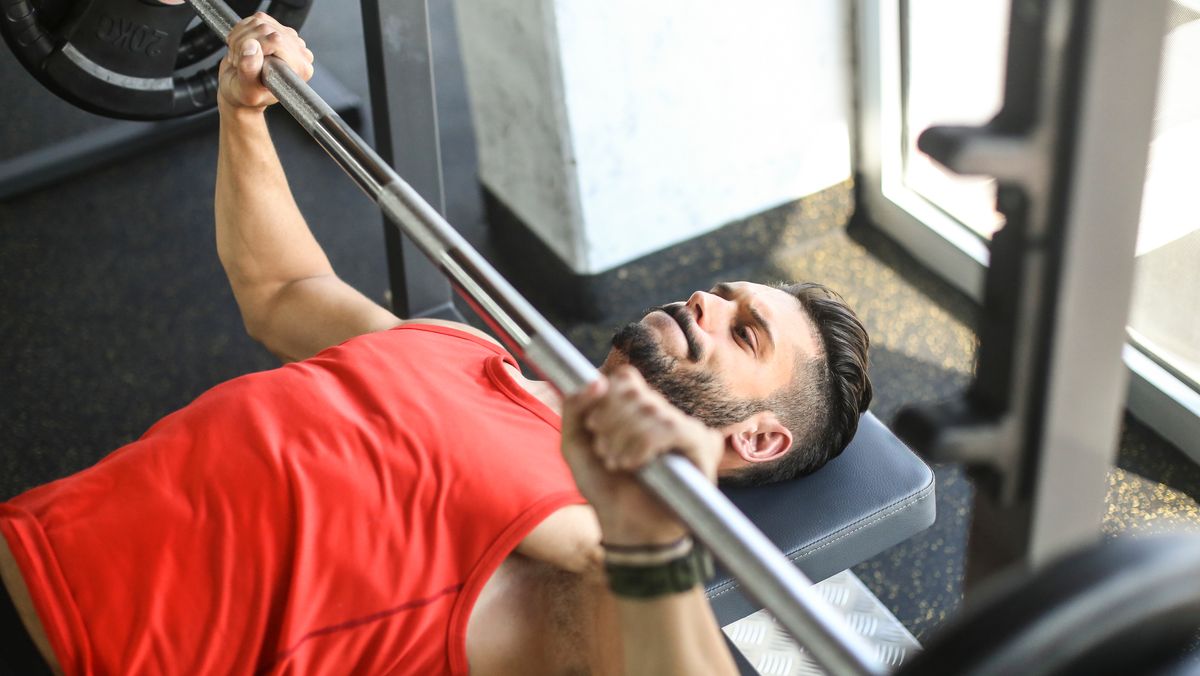Looking to train your lower pecs but not sure you’ve nailed down the correct exercises for this? Here are three exercises to include in your next upper body day, according to a bodybuilding personal trainer.
Developing muscle and definition in the lower pecs through strength training is a good way to create a fuller chest and will improve your performance in upper body exercises. But as bodybuilder and certified personal trainer Alain Gonzalez shared in a recent YouTube video, “For many of us the lower portion of the chest is the most difficult area of the pecs to build”.
Thankfully, he didn’t leave us in the dark about building out the lower pecs. Instead he said there are only really three exercises you need build a set of rounded pecs and they don’t involve push ups or decline presses.
Gonzalez’ exercises do require access to gym equipment including a barbell, dumbbells and a cable machine. But don’t worry if you don’t have a gym membership. You can still build chest muscle at home with a pair of the best adjustable dumbbells and these dumbbell chest exercises.
What are Coach Gonzalez’ Lower Pec Exercises?
According to Gonzalez, the pectoralis major, commonly referred to as the chest muscle, is composed of two main heads: the upper (clavicular) head and the lower (sternocostal) head.
“That said if you look at certain textbooks you’ll see the lowest portion of the pecs is divided into a third head, the abdominal head,” coach Gonzalez explains. “While the entire chest is responsible for horizontal induction or bringing your arms across the body the lower pecs also contribute to shoulder extension which involves bringing your arms down from a forward position.”
This is important to note when selecting the most effective exercises to target the lower pecs. Now that we have a better understanding of the lower chest anatomy, let’s jump into the three exercises that will help you build rounded lower pecs.
Flat Bench Press
While many people assume that decline presses are one of the best exercises for building the lower chest, the flat bench press offers superior overall benefits for building your chest.
“Not only does it feel more natural and lends itself better to progressive overload but the flat bench does a better job at targeting the sternumcostal head which makes up about 2/3 of the chest. “
Gonzalez referenced a 2020 study that compared chest muscle activation across five different bench press angles and it found that the mid and lower pecs showed the highest muscle activation at a zero-degree incline (flat bench).

If you are now feeling inspired to incorporate the flat bench press into your training but weighing up if the barbell or dumbbell will be better, Gonzalez weighs in. In the barbell vs dumbbell debate, both bench presses have their own benefits. Barbells offer greater stability, and allow you to lift more weight compared to dumbbells.
“Dumbbells, on the other hand, offer a greater range of motion and enhanced abduction at the top of the movement since you can bring your hands closer together at the top,” he noted.
He adds that in either case, ensure you’re setting up with your shoulder blades retracted and packed, with a slight arch in your back. This position not only keeps the shoulders nice and stable but also gives your lower pecs more leverage, effectively creating a slightly declined angle.
Bench Pullovers
Although traditionally regarded as a back exercise, Gonzalez notes that bench pullovers can significantly activate the chest, particularly the lower pecs. In the video above, he goes into why the pullover is so effective for activating the chest muscles, but for those that want to cut to the chase, here’s a more basic summary.
The muscles in the lower chest play a big role in bringing your arms down from above your head. During a pullover, when you lower the weight behind your head, those lower chest muscles get stretched out. Then, when you lift the weight back up, those same muscles work the hardest to pull it up. This combination of stretch and contraction makes the pullover great for engaging and building up the lower part of your chest.
To get the best results during your bench pullovers, Gonzalez says to limit your range of motion by stopping when the weight is just above your head, rather than bringing it all the way over your chest. “This keeps the tension on the pecs and keeps you within the range of motion where the lower pecs have leverage.”
High to Low Cable Crossovers
Gonzalez explained that high to low cable crossovers allow you to isolate the pecs by performing horizontal abduction while aligning the motion with your lower pec fibers. This type of movement removes involvement from the triceps, helping to further isolate the pecs.
For example, “During a bench press your triceps may fatigue first, limiting the tension on your packs, with cable crossovers you ensure that the pecs will go through a full range of motion and fatigue before any other muscle.”
For best results, Gonzales says to set the cables high, grab the handles, and step forward with a staggered stance. Start with arms parallel to the floor and a slight bend in your elbows. Pull the handles down to meet near your waist, keeping your torso upright. For a better contraction, cross the handles at the bottom.










